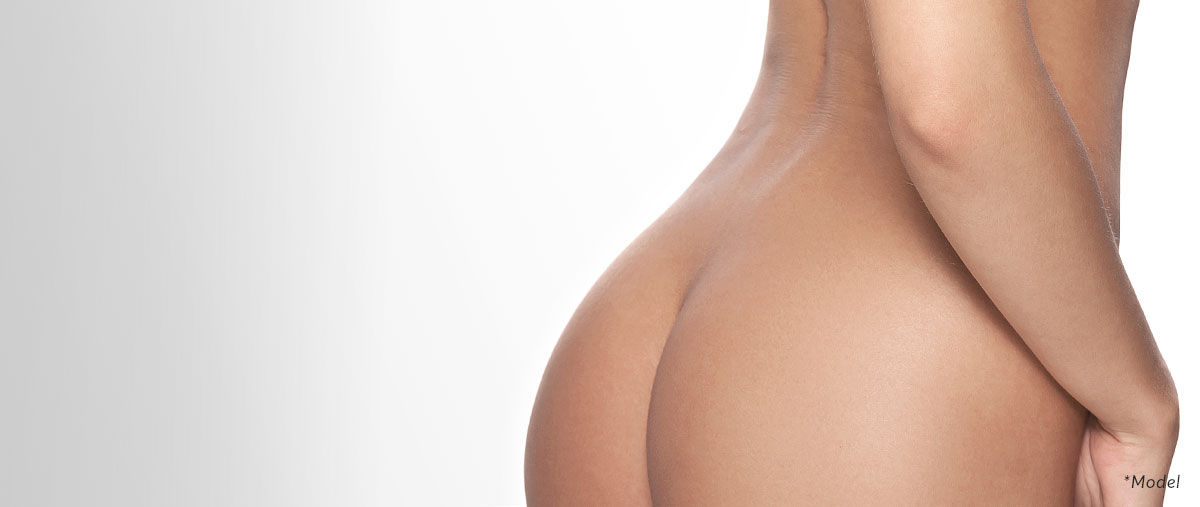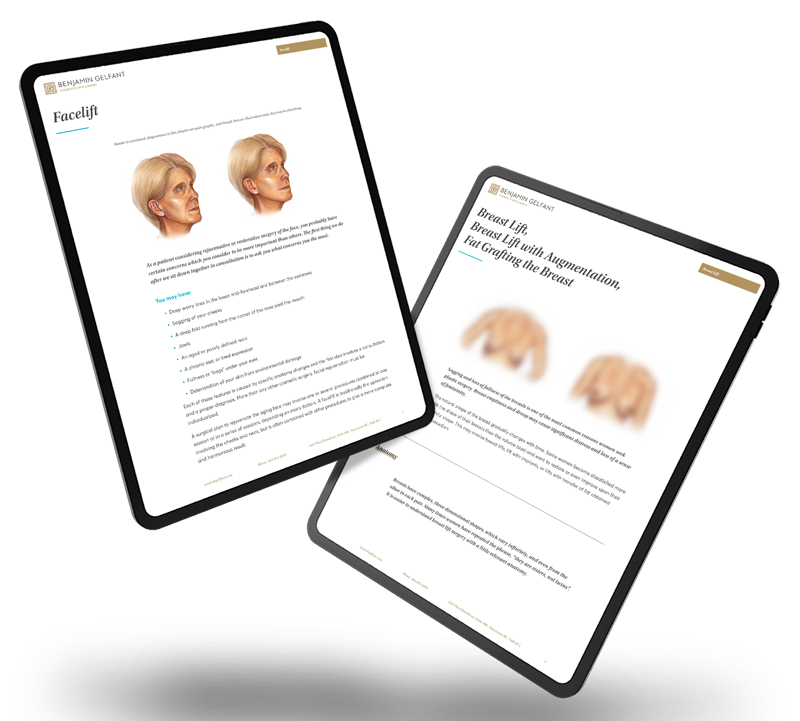Liposuction contours and removes fat deposits from areas of the body such as the neck and stomach that don’t change with diet and exercise.
Despite all your efforts at diet and exercise, you still have fat in your lower abdomen or hips, or you have always had a “pear shaped body”. We may be able to help you with liposuction.
You cannot change your genetics, and genetics plays a very large role in the shape and size of our bodies. Some people can diet and exercise like fiends and only succeed in making their faces look gaunt, yet maintain disproportionately larger fat deposits in the outer thighs, hips or abdomen.
Liposuction is not a perfect operation. Removing fat leaves the skin looser, and the operation only succeeds if you have reasonably good skin elasticity or are willing to have some irregularities of the skin surface or both. But if your desire is to wear form-fitting clothing with reduction of unsightly bulges, it can be very helpful, with a short downtime, little discomfort, and sometimes remarkable results.

Introduction to Liposuction
Also known as Lipoplasty, suction assisted liposuction, liposculpture, etc. Lipoplasty is the most commonly done cosmetic surgery procedure with the exception, perhaps, of breast augmentation.
Specifically useful alone for reducing areas of disproportionate fat accumulations (e.g. in the hips, abdomen (tummy), thighs, chin/neck, etc.)
Also, Liposuction may be a useful part of other procedures such as tummy tucks and facelifts.
It involves:
- General (complete) anaesthesia for most patients, (though small volumes of fat can be removed under local anaesthetic (“freezing”).
- Injection of large amounts of fluids with dilute local anaesthetics and adrenaline (to reduce pain and bleeding)
- Tiny incisions.
- Insertion of a blunt tipped thin metal tube with holes in the tip, connected to a device which creates a vacuum (suction). This may be a machine or even just a syringe.
- Movement of the tube in a back and forth fashion through the fat to draw in fat, break bits of it away, and gradually reduce the area’s fat overall.
- Leaves most blood vessels and nerves intact.
- Requires “good skin tone” for the skin to shrink and contour to the new reduced shape (surgeon will evaluate this).
- Usually, is followed with wearing an elastic garment (girdle or similar for several weeks after).
- Best for younger patients with good skin elasticity.
Looking For More Procedure Information?
Submit your email and receive Dr. Gelfant's illustrated patient guides in your inbox.

Patient Resources
Liposuction Surgery Instructions
Download PDFRelated Blog Posts
Valentine’s Day Is Near — Treat Your Loved One to the Procedure of Their Choice
Giving a loved one flowers or chocolates for Valentine’s Day can... read more
Additional Info.
History of Liposuction
Surgical removal of excess fat tissue has been performed for almost 100 years. However, until recently, the methods used required surface incisions and incision closures that did not usually leave minor scars. There was always a serious question as to whether the final results, in terms of permanent scarring, justified the procedures.
In the 1970′s a French surgeon, working in Paris, developed a plastic surgery technique using a blunt tipped, hollow metal tube along with a high vacuum suction to remove fat tissue in a number of different body locations. This method became widely used and found wide acceptance by both surgeons and patients. Recent refinements have made the surgery safer, less painful, and produce even better results.
More Information About Liposuction Treatments
The object is not to remove all the fat tissue. A layer must be preserved to avoid undesirable effects. This layer can be thinner in some areas of the body than others.
An important factor in determining any final result is the degree of normal skin elasticity. The skin of younger individuals is more favourable than that of older individuals and results in even shrinkage and a smoother final surface.
In older skin, this elastic quality is diminished and it is possible that some wrinkling or irregularity will remain following surgery, even under the best of circumstances. If elasticity is felt to be inadequate to give a good esthetic result, you may be advised to have a skin tightening operation (see Body Contour) of the treated areas, alone, or in combination with suction. This is most common in the abdomen (see Abdominoplasty) but is also useful in the neck (see Rejuvenating Facial Surgery), the buttocks and thighs (see Buttock & Thigh Lift).
Postoperatively, you will be wearing a compression garment (girdle) which has been made expressly for this purpose, with zippers, hooks & eyes, or velcro® closures, and an opening in the crotch so that for the first few days it does not need to be removed. Compression is worn almost continuously for two to six weeks, depending on your circumstances. After the first few days, swimming may be advisable, water pressure from sitting in a pool has a very similar effect as a girdle and feels wonderful.
Discover Your Liposuction Options
Although liposuction treatments have limitations, it is a wonderful method of achieving improvement in body shape when localized fatty deposits limit what you can achieve through diet and exercise alone. Continuing improvements in techniques have made it safer and more reliable over the years since its inception.
If you have any questions about liposuction procedures, the friendly staff at our Vancouver clinic is available to assist you.
You are welcome to call us at (604) 874-2078 or you can book a consultation to speak directly with Dr. Gelfant.
